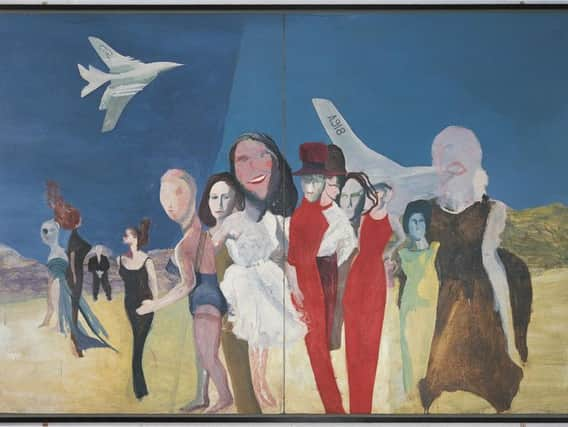POP! Art explored in Chichester


Gallery director Simon Martin said the exhibition explores the ground-breaking era of Pop Art in Britain and the dynamic ways in which artists responded to rapid social change during the 1950s and 1960s.
“Explored through a series of themes, the exhibition demonstrates the breadth of British Pop Art and the complexity of its definition, presenting Pop as an attitude with a lasting legacy. Pallant House Gallery holds one of the largest public collections of British Pop Art internationally, formed by the architects Colin St John Wilson and MJ Long. The exhibition celebrates this extensive body of paintings, sculpture and prints created in the two decades that followed the Second World War.
Advertisement
Hide AdAdvertisement
Hide Ad“In the 1950s and 1960s a generation of artists led by Eduardo Paolozzi, Richard Hamilton and Peter Blake responded to a radical cultural shift, addressing the rise of mass media, the cult of celebrity, questions of identity and prevalent political issues – all concerns still relevant today.
“Artists adopted imagery from a wide range of cultural sources including advertising, comics, science fiction and contemporary music; they embraced non-traditional techniques such as screen printing and unconventional materials such as commercial house paints and found objects. They challenged thinking about art and mass media, democratising art in the post-war period by questioning the traditional division between high and low art.
The exhibition – Pallant House Gallery’s largest to date, held in the entire upper galleries of the contemporary wing – will feature a number of themes, among them Man and Machine.
“In the 1950s, artists searched for an appropriate way forward for modern art. For many the figure became a vehicle through which to explore personal and stylistic developments, and questions of identity and gender roles in the changing cultural landscape. Artists such as Nigel Henderson and Eduardo Paolozzi created collages using mechanical debris and printed materials to explore the depiction of the figure in an increasingly-mechanised environment. Taking this further, Richard Hamilton’s Hers is a Lush Situation (1958) commented on the sexual allure inherent in automobile advertising by merging the female figure with car design.”
It will also look at Celebrity and Pleasure.
Advertisement
Hide AdAdvertisement
Hide Ad“As the economy gradually grew after years of rationing, the desire for consumerism and the proliferation of images through mass media both increased. The burgeoning presence of popular music, film, magazines and advertising led to an obsession with celebrity.”